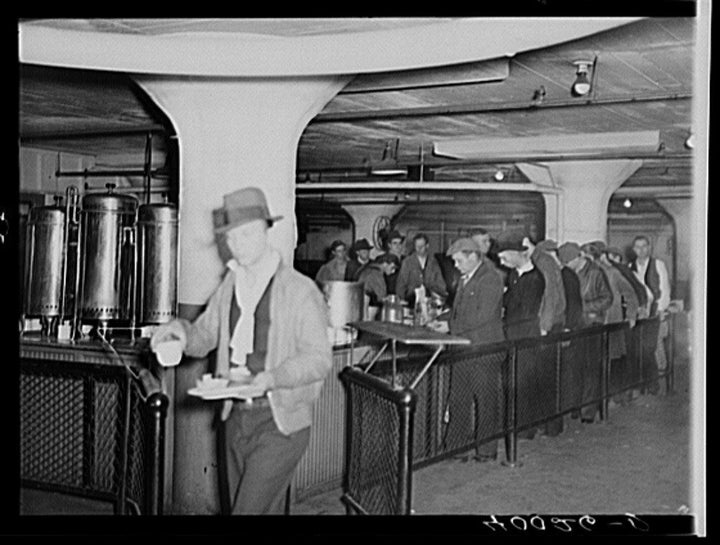
Autoworkers occupied a factory in Flint, Mich., 75 years ago Friday, launching a struggle that would involve tens of thousands of workers and bring the United Auto Workers into the national spotlight.
The Flint Sit-Down Strike, as it is now known, lasted 44 days. The strike marked the first victory of the UAW, which had formed just a year before in 1935.
Although there had been prior strikes at other auto plants, Flint represented a new milestone for the union movement. The strike targeted two critical plants, Fisher 1 and 2. Both belonged to General Motors, the biggest of the big three auto manufacturers in the United States. UAW activists realized the strike had the potential to paralyze the auto manufacturer and give them a platform to organize on a national level.
Mike Kerwin is a labor activist and a retired member of UAW Local 174. He joined the union in 1950 and remembers hearing about the Flint strike as a child. He told HuffPost that the Flint strike holds an immensely significant place in labor history.
"It broke open the whole question of whether the big shots in the auto industry would recognize industrial unions," he said. "That was big in those days because until then all of the efforts had been to establish craft unions and most of them had been defeated."
The strike led to the union's formal recognition by General Motors as the sole collective bargaining agent for its employees, an arrangement that would eventually lead to better wages and working conditions. Before the strike, Kerwin said, prospects for the average autoworker were pretty bleak.
"There was the uncertainty of the Depression. There was the uncertainty of the threat of management firing you if they knew you were going to be a union activist. There was the speed-up -- that was horrendous, that you had to do more and more work for the same amount of pay."
Flint's strikers were building on a tradition of labor activism in the auto plants. A sit-down strike at the Kelsey-Hayes wheel parts plant in Detroit foreshadowed the events in Flint, explained Jim Rehberg, another member of Local 174 and a volunteer with the Wobbly Solidarity Kitchen, a local group that provides meals in support of labor struggles and other causes.
"Although Flint was the first major sit-down, it was preceded by a sit-down in the Detroit area UAW Local 174," said Rehberg. "But they had to hurry up and finish that one so they could get to Flint for the major sit-down that had been planned."
Flint changed things. Within less than a month, 135,000 workers in 35 cities across the country struck at General Motors.
According to Rehberg, the sit-down tactic caught the imagination of working people across the nation.
"It wasn't just the UAW, but it seemed for working people in general it was like a snowball going down a hill," he said. "All kinds of groups of people were trying to imitate what the auto workers were doing to get a union, to get some rights, to get a voice on the job."
According to William LeFevre, archivist at Wayne State's Walter Reuther Labor Library, the Flint strike involved less bloodshed then similar strikes had in the past. LeFevre said President Franklin D. Roosevelt and Michigan Gov. Frank Murphy (D) sympathized with the strikers' demand for union recognition and added that the union had prepared well for the struggle.
"They had stockpiled food and they had stockpiled, for the lack of a better term, weapons -- door hinges you could throw down on the police," he said. "They were up on higher floors of the plant, and they had the support of a lot of people in the community in Flint."
Although much has changed since the 1930s, LeFevre sees similarities between the Flint strikers and today's Occupy Wall Street movement. He said that then, just as now, the public felt anxiety about a rough economic climate.
"The fact that there's a good number of the citizens in the United States that see the inequality in wages and benefits and the ability to simply get work -- I think that the fact that our citizens see that inequality now kind of harkens back to why they fought in 1937 during the sit-down strike," LeFevre said.
Kerwin agrees that there are parallels between the two struggles, but differences as well.
"This was a job action," he said. "This was an organized movement. It had leadership in the plants and outside the plant. It had definite goals, as contrasted to the Occupy movement."
Although Kerwin cautions against drawing too close a comparison, he is quick not to write off the Occupy protesters. Flint has its own chapter, which is training local activists and coordinating with efforts of Occupy Detroit and other Michigan groups. The new activists are dealing with a changed world, Kerwin said, and their actions offer lessons for everyone, even those who came before them.